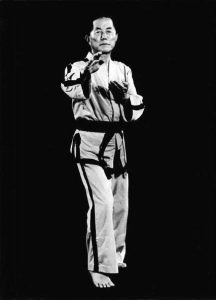Definition of Taekwon-do
By definition, Taekwon-Do is a version of unarmed combat designed for the purpose of self-defence. It is more than just that, however. It is the scientific use of the body in the method of self-defence; a body that has gained the ultimate use of its facilities through intensive physical and mental training.
It is a martial art that has no equal in either power or technique. Though it is a martial art, its discipline, technique and mental training are the mortar for building a strong sense of justice, fortitude, humility and resolve. It is this mental conditioning that separates the true practitioner from the sensationalist, content with mastering only the fighting aspects of the art.
This is one of the reasons that Taekwon-Do is called an art of self-defence. It also implies a way of thinking and life, particularly in instilling a concept and spirit of strict self-imposed discipline and an ideal of noble moral rearmament. The nearest description of it is almost a cult.
 Translated literally “Tae” stands for jumping or flying, to kick or smash with the foot. “Kwon” denotes the fist-chiefly to punch or destroy with the hand or fist. “Do” means an art or way – the right way built and paved by the saints and sages in the past.
Translated literally “Tae” stands for jumping or flying, to kick or smash with the foot. “Kwon” denotes the fist-chiefly to punch or destroy with the hand or fist. “Do” means an art or way – the right way built and paved by the saints and sages in the past.
Thus taken collectively “Taekwon-Do” indicates the mental training and the techniques of unarmed combat for self-defence as well as health, involving the skilled application of punches, kicks, blocks and dodges with bare hands and feet to the rapid destruction of the moving opponent or opponents.
Taekwon-Do definitely enables the weak to possess a fine weapon together with confidence to defend him or herself and defeat the opponent as well. Of course, wrongly applied, Taekwon-Do can be a lethal weapon. Therefore mental training must always be stressed to prevent the student from misusing it.
As for women folk, they will undoubtedly find Taekwon-Do an invaluable asset in tackling and driving away “wolves”, so to speak. When one is informed of the many instances where frail women effectively protected themselves, they may sound unbelievable. But really, they have been able to do so because they are well versed in the art of self-defence.
The feats of Taekwon-Do are great in number. To mention a few is probably pertinent: for instance, flying over a mounted motorcycle or eleven persons in line to attack a target with the foot; breaking an inch thick pine board placed at a height of ten or eleven feet with the foot; breaking two pieces of red brick with an open hand or knife-hand; smashing seven or eight pieces of two inch thick pine board at a single blow with the fist; attacking two targets with the same foot in succession while flying and so on. To the layman in the street, such feats may sound impossible, but to the serious students of Taekwon-Do and the exponents of this art, it is quite ordinary. Of course, by mastering this art it does not mean that you will be asked to do acts of impossibility. Particularly if someone should challenge you to kill a wild bull with your bare hands. Therefore it is clear that equivalent demonstrations of such effective use of pure somatic force is not to be seen in other forms of physical combat technique.
Incessant training is essential to keep oneself in top form and physical condition. In training, all the muscles of the human body will be used. From the use of one’s muscles, it will be possible to harness all available power generated by every muscular contraction. It will then be necessary to deliver such power to the human target especially to where the most vulnerable points or vital spots of one’s opponent are located, in particular when the opponent is in motion. At this point it is necessary to remind the students of Taekwon-Do that this art of self-defence is specially designed for swift retaliation against the moving aggressor.
Most of the devastating maneuvers in Taekwon-Do are based specially on the initial impact of a blow plus the consequential additional force provided by the rebound of the opponent’s moving part of the body. Similarly by using the attacker’s force of momentum, the slightest push is all that is needed to upset his or her equilibrium and to topple him or her.
In the case of the students of Taekwon-Do who have been in constant practice or the experts themselves, they spend no time thinking, as such an action comes automatically to them. Their actions, in short, have become conditioned reflexes.
Website sponsored by Global Fitness Institute


